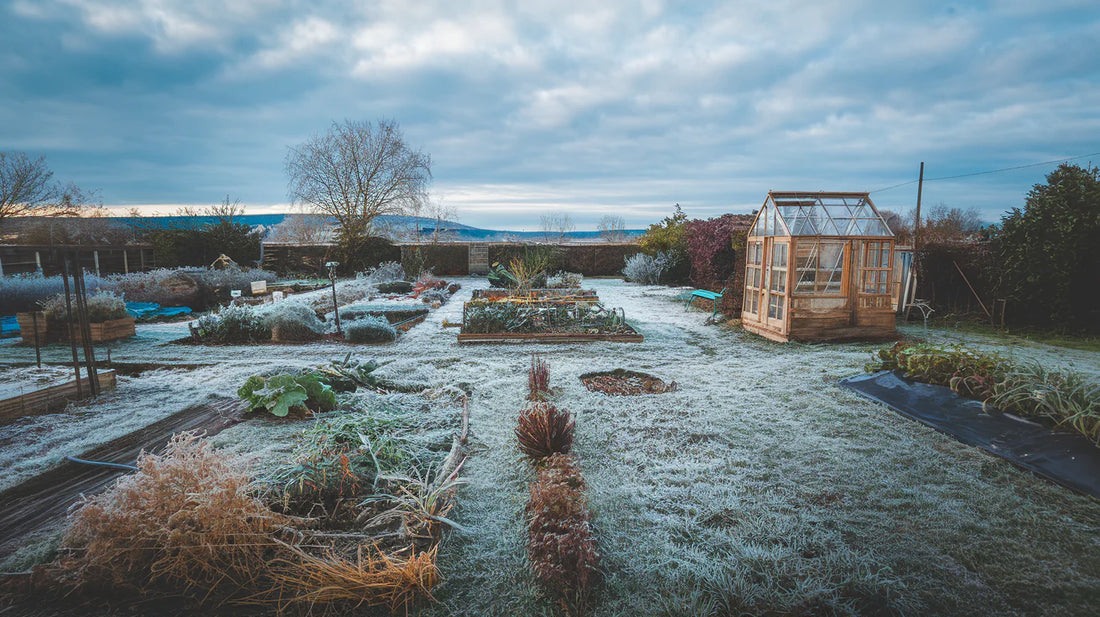
Frosty February? Not a problem for starting these seeds.
Share
What Vegetables to Sow in February in the UK
February marks a turning point in the gardening calendar, as the days begin to lengthen and temperatures slowly rise. While it’s still cold, there are plenty of vegetables you can sow this month to prepare for a bountiful harvest later in the year. Here’s a guide to what you can sow in February, whether indoors, outdoors, or in the greenhouse, along with tips to maximise your success.
Indoors or on a Windowsill
Starting seeds indoors in February provides a warm and controlled environment for tender crops and ensures you’re ready to transplant as soon as conditions improve outside.
1. Tomatoes
-
Why sow now? An early start gives tomatoes ample time to grow and develop before the main growing season.
-
Requirements: Sow seeds in small pots or seed trays filled with seed compost. Place them on a warm windowsill or in a propagator at 18-21°C.
-
Tip: Choose greenhouse varieties like ‘Moneymaker’ or outdoor types like ‘Gardeners Delight’ if you plan to plant them outside later.
2. Peppers (Sweet and Chilli)
-
Why sow now? Peppers have a long growing season, so starting in February is ideal.
-
Requirements: Use a heated propagator or a sunny windowsill. Keep soil temperatures around 20-25°C.
-
Tip: Mist seedlings regularly to maintain humidity.
3. Aubergines
-
Why sow now? Like tomatoes and peppers, aubergines benefit from an early start.
-
Requirements: Sow seeds in pots or trays and keep them in a warm environment (20-25°C).
-
Tip: Thin seedlings once they develop their first true leaves to give them room to grow.
4. Celery and Celeriac
-
Why sow now? These crops have a long growing season and need an early start.
-
Requirements: Use seed trays and provide temperatures of around 15-18°C. Ensure consistent moisture.
-
Tip: Thin seedlings to prevent overcrowding and ensure good air circulation.
5. Herbs (Basil, Parsley, and Coriander)
-
Why sow now? Fresh herbs can be grown indoors year-round, but February is a good time to start replenishing your supply.
-
Requirements: Sow in small pots on a sunny windowsill. Keep the compost moist but not waterlogged.
-
Tip: Harvest regularly to encourage bushier growth.
In a Greenhouse
A greenhouse allows you to sow a wider range of crops in February, providing protection from frost and cold winds.
6. Broad Beans
-
Why sow now? Broad beans sown in February will establish well before spring.
-
Requirements: Sow in pots or root trainers in the greenhouse to protect young plants from harsh weather.
-
Tip: Choose hardy varieties like ‘Aquadulce Claudia’.
7. Early Peas
-
Why sow now? Peas started in a greenhouse can be transplanted outdoors as soon as conditions improve.
-
Requirements: Use deep pots or guttering filled with compost. Keep temperatures above 7°C.
-
Tip: Support young plants with twigs or netting.
8. Salad Leaves
-
Why sow now? Quick-growing salad leaves can be sown throughout the year in a protected environment.
-
Requirements: Use trays or shallow pots filled with compost. Keep the greenhouse frost-free.
-
Tip: Harvest leaves when young and tender for the best flavour.
9. Spinach
-
Why sow now? Hardy varieties can be started in the greenhouse for an early harvest.
-
Requirements: Sow in seed trays or directly into greenhouse borders. Keep the soil moist.
-
Tip: Thin seedlings to allow ample space for growth.
Outdoors
Outdoor sowing in February is limited to hardy crops. Protect seedlings with cloches, fleece, or cold frames to improve germination and growth.
10. Garlic
-
Why sow now? Garlic cloves planted in February will still benefit from the remaining cold weather, which promotes bulb development.
-
Requirements: Plant cloves 2.5cm deep in well-drained soil with the pointed end facing up. Space 10cm apart.
-
Tip: Use varieties suited to UK conditions, such as ‘Solent Wight’.
11. Onion Sets
-
Why sow now? Early planting gives onions a head start, leading to larger bulbs.
-
Requirements: Plant in a sunny spot with well-drained soil. Cover with fleece if frost is severe.
-
Tip: Avoid planting in waterlogged soil to prevent rot.
12. Shallots
-
Why sow now? Like onions, shallots thrive when planted early.
-
Requirements: Space sets 15cm apart in rows. Ensure soil is loose and free of weeds.
-
Tip: Mulch around sets to suppress weeds and retain moisture.
Specific Tips for Success
-
Light Levels: Use grow lights or place seedlings in the brightest spot available to prevent leggy growth.
-
Temperature: Maintain stable temperatures in propagators, greenhouses, or indoors. Avoid sudden temperature fluctuations.
-
Watering: Keep soil consistently moist but not waterlogged. Overwatering can lead to damping-off disease.
-
Protection: Use fleece, cloches, or cold frames to protect young plants from frost and pests.
-
Labelling: Clearly label pots and trays to avoid confusion later.
Conclusion
February is an exciting time for gardeners, as it offers the chance to get ahead with sowing both tender and hardy crops. By choosing the right environment—whether indoors, in the greenhouse, or outdoors—and following the specific requirements of each plant, you’ll set yourself up for a productive growing season. Happy gardening!
